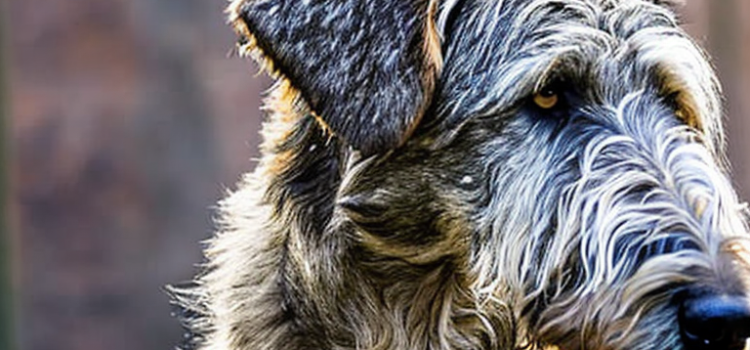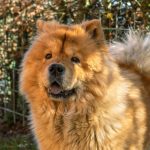
Irish Wolfhound: Majestic and Gentle Giants
Introduction
Irish Wolfhounds are an ancient and noble breed known for their imposing size and gentle nature. In this article, we will explore the fascinating history, unique characteristics, care requirements, and the role of Irish Wolfhounds as family pets. Whether you are a dog lover or considering adding an Irish Wolfhound to your family, this comprehensive guide will provide valuable insights and essential information.
History of Irish Wolfhounds
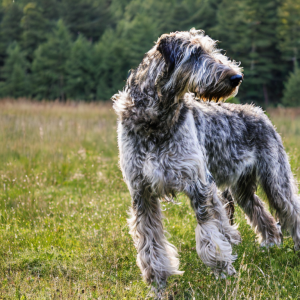
The Irish Wolfhound has a rich and storied history of over 2,000 years. Initially bred in Ireland, these magnificent dogs were revered by ancient Celtic tribes and were used for various purposes, including hunting large game, guarding livestock, and as loyal companions to nobility. Their imposing size and impressive hunting abilities made them highly prized.
Appearance and Size
Irish Wolfhounds are the tallest dog breeds, often standing over three feet at the shoulder. Despite their size they possess a graceful and elegant appearance. They have a wiry rough coat that comes in various colors such as gray, brindle, red, black and white. Their deep chest, long legs and muscular build contribute to their remarkable strength and agility.
Temperament and Personality
The gentle and friendly attitude of Irish Wolfhounds is one of its most charming characteristics. Despite their size, they are regarded for being friendly and tolerant, making them wonderful family pets. They are friendly towards children and other animals, and their calm disposition makes them ideal for households of all sizes.
Training and Socialization
Early socialization and obedience training are crucial for Irish Wolfhounds. Due to their giant size, it is essential to establish boundaries and teach them proper manners from a young age. Positive reinforcement methods, such as reward-based training, work best for these intelligent and sensitive dogs. Irish Wolfhounds can become well-behaved and obedient companions with consistent training and patience.
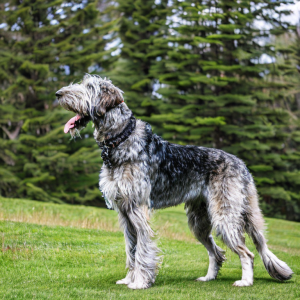
Health and Exercise
Irish Wolfhounds are prone to specific health issues like all dog breeds, including hip dysplasia, heart problems, and bloat. Regular veterinary check-ups, a balanced diet, and proper exercise are essential for maintaining their overall well-being. Despite their size, they have moderate exercise needs and enjoy daily walks and playtime in a securely fenced yard.
Grooming and Maintenance
Irish Wolfhounds have a low-maintenance coat that requires regular brushing to remove loose hair and prevent matting. Additionally, their ears should be checked regularly for cleanliness and signs of infection. Their nails should be trimmed periodically, and dental hygiene should be maintained by brushing their teeth. Overall, their grooming needs are relatively simple compared to other breeds.
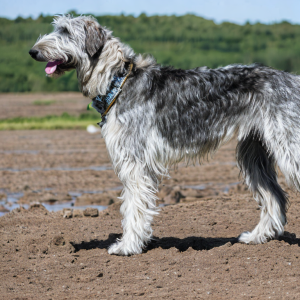
Feeding and Nutrition
Due to their large size, Irish Wolfhounds have specific nutritional requirements. A high-quality, balanced diet tailored to their age, size, and activity level is essential. It is recommended to consult a veterinarian to determine an Irish Wolfhound’s appropriate diet and feeding schedule. Additionally, portion control is essential to prevent obesity and associated health issues.
Living with an Irish Wolfhound
Living with an Irish Wolfhound requires adequate space and a secure environment. They are often well suited to both urban and rural environments as long as they get frequent exercise and mental stimulation. Their enormous size should be taken into account while selecting a house and measures should be made to keep them from accidently knocking over anything.
Irish Wolfhounds as Family Pets
Irish Wolfhounds make exceptional family pets due to their gentle nature and loyalty. They form strong bonds with their human companions and thrive in loving and nurturing environments. However, their size and exercise needs should be considered, and families with small children should supervise interactions to ensure the child’s and the dog’s safety.
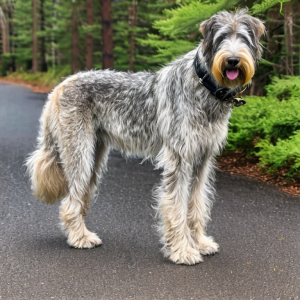
Common Misconceptions
Several common misconceptions about Irish Wolfhounds need clarification. Despite their name, they are not aggressive or ferocious. They are also not suitable for guarding duties due to their friendly and non-confrontational nature. Additionally, their size does not necessarily correlate with high exercise requirements. While they need regular exercise, they are generally less active than smaller breeds.
Finding a Reputable Breeder
It is critical to select a reliable breeder when trying to add an Irish Wolfhound to your home. Responsible breeders focus their dogs’ health and temperament, providing optimum care and socialization from an early age. They do health checks and genetic testing to reduce the risk of inherited diseases.
Adopting an Irish Wolfhound
Another option for welcoming an Irish Wolfhound into your family is through adoption. Some breed-specific rescue organizations and shelters occasionally have Irish Wolfhounds available for adoption. Adopting a dog gives a deserving animal a loving home and may be a truly satisfying experience. However, before adopting, it is critical to evaluate the breed’s individual demands and expectations.
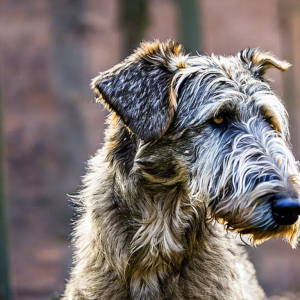
FAQs
1. Are Irish Wolfhounds good with children?
Yes, Irish Wolfhounds are generally good with children. They are gentle and patient, making them suitable companions for families.
2. How much exercise do Irish Wolfhounds need?
Despite their large size, Irish Wolfhounds have moderate exercise needs. Daily walks and playtime are usually sufficient to keep them healthy and happy.
3. Do Irish Wolfhounds shed a lot?
Irish Wolfhounds have a low-shedding coat. Regular brushing helps to minimize loose hair and keep their skin in good condition.
4. Are Irish Wolfhounds easy to train?
Irish Wolfhounds are intelligent and eager to please, but they can sometimes be independent. With consistent training and positive reinforcement, they can be trained effectively.
5. How long do Irish Wolfhounds live?
An Irish Wolfhound has an average lifetime of 6 to 8 years. However, with good care, some people can survive for up to ten years or more.
Conclusion
Irish Wolfhounds are truly magnificent dogs that combine size, grace and gentle nature. Their rich history, impressive appearance, and loving personality make them a unique breed that captures the hearts of many.
However, potential owners must consider their needs, including proper socialization, training, exercise, and a loving home environment. With the proper care and attention, Irish Wolfhounds can bring immense joy and companionship to their families.
FAQs (Continued)
1. Are Irish Wolfhounds good with other pets?
Irish Wolfhounds are generally good with other pets, including dogs and cats. Proper introductions and socialization are important.
2. Can Irish Wolfhounds live in apartments?
While Irish Wolfhounds can adapt to apartment living, they require sufficient space for exercise and mental stimulation. Regular walks and access to a secure outdoor area are essential.
3. Are Irish Wolfhounds prone to health issues?
Like many large dog breeds Irish Wolfhounds are prone to specific health issues such as hip dysplasia and heart problems. Regular veterinary check-ups and a healthy lifestyle can help mitigate these risks.
4. Do Irish Wolfhounds bark a lot?
Irish Wolfhounds are generally not excessive barkers. They are more likely to bark when necessary, such as to alert their owners of something unusual.
5. Can Irish Wolfhounds be left alone for long periods?
Irish Wolfhounds are highly sociable canines who thrive on human company. If they are left alone for an extended amount of time, they may develop separation anxiety.
It is best to provide them with regular interaction and mental stimulation.









